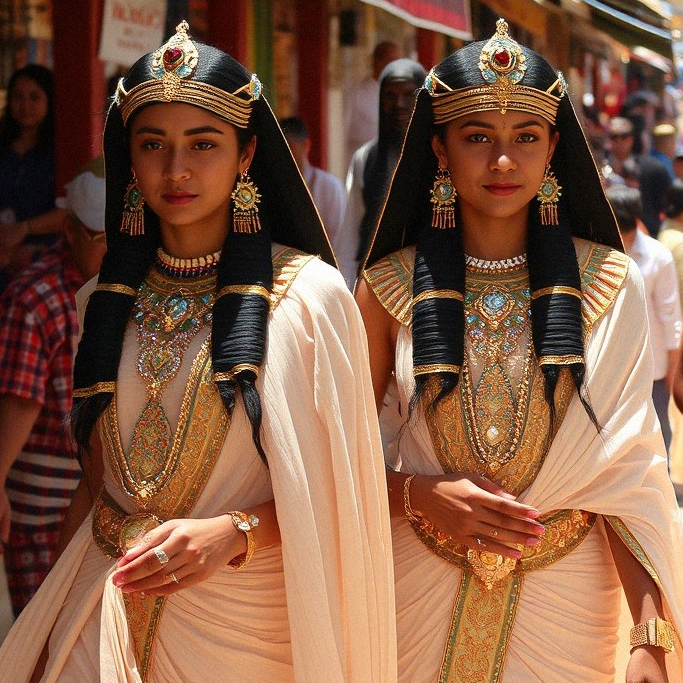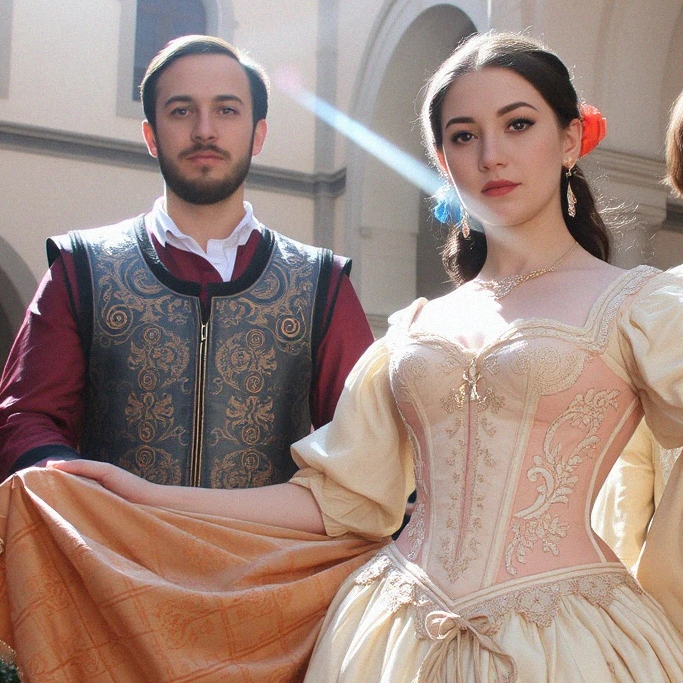The Evolution of Fashion
Fashion, a mirror reflecting societal shifts, cultural nuances, and individual expression, has been an ever-evolving art form.1 From the rudimentary coverings of our ancestors to the haute couture masterpieces of today, fashion has traversed centuries, leaving an indelible mark on human history.2
1. Ancient Origins

The roots of fashion can be traced back to ancient civilizations. In Egypt, the elite adorned themselves with intricate garments made of linen, often embellished with gold and precious stones.3 The flowing silhouettes and vibrant colors of Egyptian fashion reflected their belief in the afterlife.
Across the Mediterranean, the Greeks and Romans embraced a more relaxed and practical approach to clothing. The toga, a simple yet elegant garment worn by both men and women, became synonymous with Roman culture. However, it was the intricate and colorful garments of the Byzantine Empire that truly showcased the opulence and sophistication of the era.4
2. Medieval Modesty

The Middle Ages saw a shift towards more modest and functional clothing.5 The influence of the Church led to the dominance of long, flowing garments for both sexes. However, beneath these austere exteriors, fashion continued to evolve, with intricate embroidery, rich fabrics, and elaborate headwear.
3. Renaissance Revival

The Renaissance marked a period of great artistic and cultural revival, and fashion was no exception.6 Inspired by classical Greek and Roman aesthetics, clothing became more fitted and elegant.7 The corset, a defining garment of the era, accentuated the female form, while men’s fashion embraced tailored suits and doublets.8
The Roaring Twenties

The 20th century ushered in a period of rapid change, and fashion was at the forefront of this transformation. The Roaring Twenties saw a dramatic shift away from the restrictive clothing of the Victorian era.9 Flapper dresses, characterized by their short hemlines, loose silhouettes, and bold colors, symbolized the newfound freedom and modernity of the age.10
The Fifties and Sixties

The 1950s were a decade of elegance and femininity, with the iconic hourglass silhouette defined by full skirts and cinched waists.11 However, the 1960s brought a radical departure from the past, with the rise of youth culture and counterculture movements.12 Mini skirts, bell-bottom pants, and psychedelic prints became synonymous with this era of rebellion and experimentation.13
Contemporary Fashion

In the 21st century, fashion has become a global industry, driven by technology, social media, and fast fashion.14 Designers continue to push boundaries, blending traditional techniques with innovative materials and futuristic designs.15 Sustainable fashion has also gained prominence, as consumers become increasingly aware of the environmental impact of the industry.16
Conclusion
From the ancient Egyptians to the modern-day fashion icons, the history of fashion is a captivating journey through time. It is a testament to human creativity, ingenuity, and the enduring desire to express ourselves through clothing. As fashion continues to evolve, one thing remains certain: it will always be a reflection of the times we live in.
sources:
https://en.wikipedia.org/wiki/Clothing_in_ancient_Egypt https://en.wikipedia.org/wiki/Clothing_in_ancient_Greece https://fashionhistory.fitnyc.edu/byzantine/ https://www.britannica.com/topic/dress-clothing/Medieval-Europe https://fashionhistory.fitnyc.edu/tag/renaissance/ https://fashionhistory.fitnyc.edu/1920-1929/ https://fashionhistory.fitnyc.edu/1950-1959/ https://fashionhistory.fitnyc.edu/1960-1969/ https://fashionhistory.fitnyc.edu/category/21st-century/


Leave a Reply